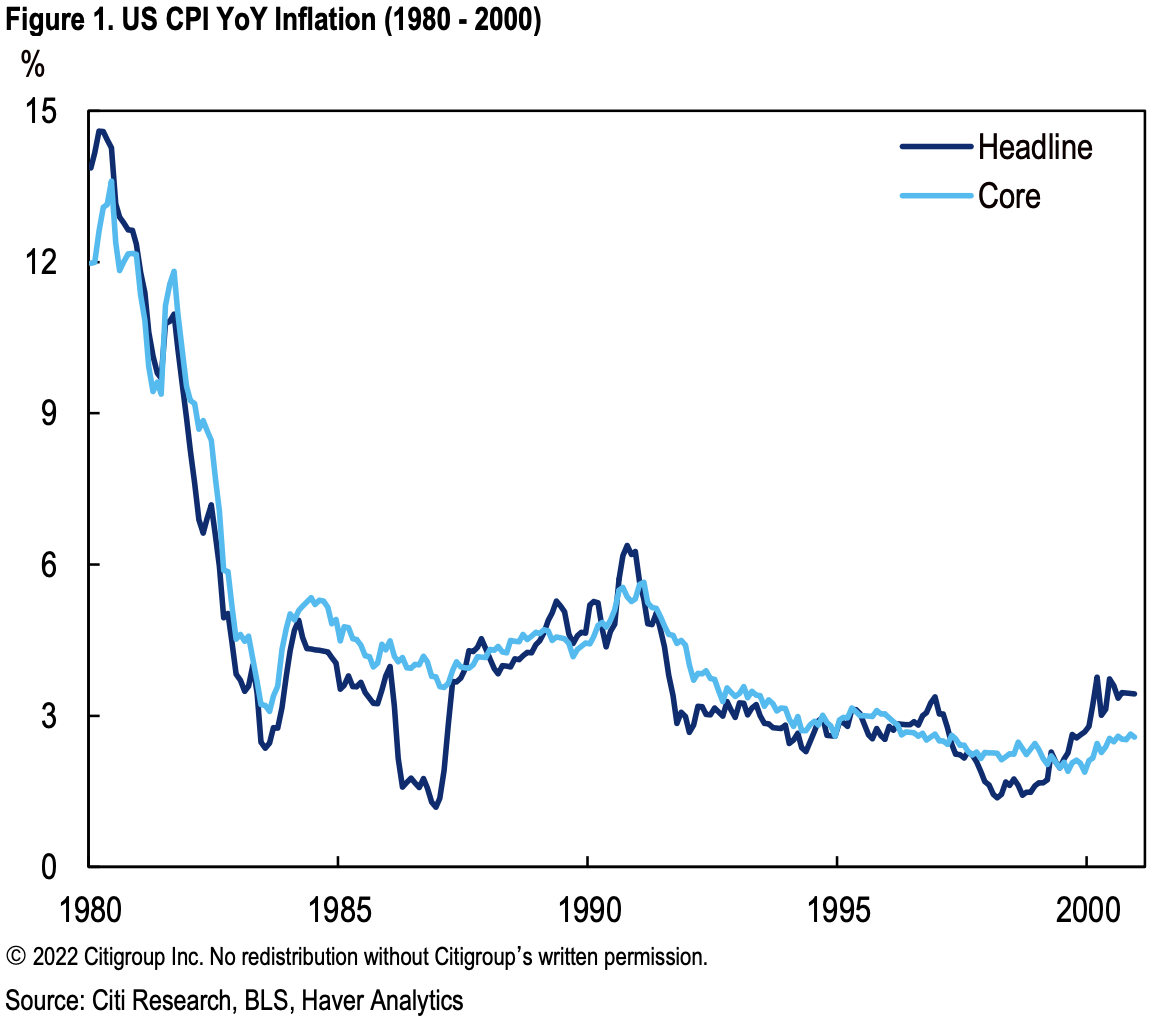Why the US Fed might be shooting for the front of the green, not the hole
Over the long run, the Federal Open Market Committee (FOMC) has an inflation target of 2%. It forms one of the three pillars of the Fed's mandate, the other two being maximum employment and moderate long-term interest rates.
For those playing at home, US inflation is currently at 8.263% - way above 2%. So, as would be expected, it's hiking its tail off to depress demand in the hope that doing so will bring the parts of the economy that are supply-constrained back into equilibrium.
But what if I was to tell you that the Fed might not be aiming for 2% at all? And that it might instead take its foot off the brakes when inflation drops to 3-4%. Indeed, at what point does the need for price stability gives way to the need to maintain employment and moderate long-term interest rates?
The concept of opportunistic disinflation may provide some answers. Citi's team of global economists, led by veteran Nathan Sheets, has just released a cracker of a research note discussing this, and I'll outline the key takeaways from it in this wire.
What is opportunistic disinflation?
When inflation is extremely high, as it is today, central banks go hard and hike, and maybe pair that with quantitative tightening - selling or letting expire the bonds on their balance sheets.
However, when inflation approaches the target, central banks become more dovish. They take their foot off the rate pedal and turn their attention instead to employment and output gaps. The idea, then, is that the final leg to the target is more or less taken care of by the market.
To use a golf analogy, it's like aiming for the front of the green in the hope that the momentum and green conditions will be enough to take the ball the rest of the way to the hole.
Nothing new
When one thinks about central banks and inflation, the first banker they think of - after Jerome Powell - is former Federal Reserve Chair, Paul Volcker.
In 1981, headline inflation peaked at 9.8%. Volcker brought it back under control by sending the cash rate to almost 20%. Volcker achieved two things - he got inflation under control, and he caused two recessions.
However, while Volcker is the inflation poster boy, he didn't get CPI down to the 2% target. Oh no, that took another 15 years. Through the second half of the 80s, inflation sat at about 4%.

"We find that inflation plateaued at roughly 4% through the second half of the 1980s, and then declined gradually through the 1990s, reaching 2% only toward the end of the period," Citi's analysts say.
"The benefit of this policy was that it allowed the economy to achieve sustained 4% growth through the second half of the decade and a sizable drop in the unemployment rate (Figures 4 & 5). It also set the stage for further disinflation in the 1990s. The 1990s disinflation was achieved with a lower real Fed funds rate than prevailed in the 1980s, while allowing growth at a similarly rapid pace and unemployment to fall sharply further."
Will Powell do a Volcker?
One thing is almost for certain - Jerome Powell won't let his foot off the brake anytime soon.
But, he's slammed the brake so hard that recession has become somewhat of a foregone conclusion.
Earlier this month he stated that "“No one knows whether this process will lead to a recession or, if so, how significant that recession would be”, but went on to say that “We have got to get inflation behind us,” Powell said. “I wish there were a painless way to do that. There isn’t.”
This is probably the most definitive forecast of a recession you'll ever hear come out of the mouth of a Fed Chair. They're simply not in the business of causing any more fear in the market beyond the walk they talk on rates.
But will the Fed remain fixated on the inflation target or turn its gaze to employment, which, by the time inflation has been tamed, will be way up?
"On the one hand, there is very little evidence that inflation of 3-4% imposes meaningful costs on economic welfare. On the other hand, a major difference today is that the Fed has formally committed to a 2% target."
All told, Citi reckons the Fed will be more circumspect once inflation drops below 4%, which would give it more scope for opportunistic disinflation.
"After all, its dual mandate includes employment as well as inflation."
Never miss an insight
Enjoy this wire? Hit the ‘like’ button to let us know. Stay up to date with content like this by hitting the ‘follow’ button below and you’ll be notified every time we post a wire.
Not already a Livewire member? Sign up today to get free access to investment ideas and strategies from Australia’s leading investors.
3 topics

